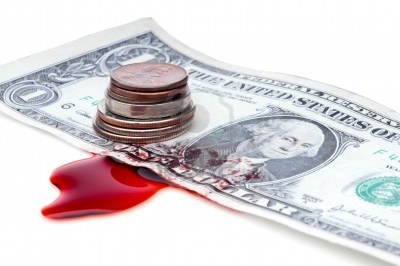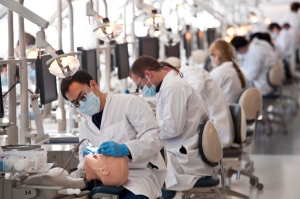 The cost of education required to become a dentist is astronomical. In fact, it is the most expensive education for any career path! A lot of students tell me they don’t realize how much dental school really costs until it is far too late to back out. This is why it is absolutely essential, in this day and age, to make sure dentistry is the right career path for you. The unfortunate truth is our generation is not expected to be able to finance a home or a private practice until at least a decade into our careers. So what changed? Why is dental school so expensive? I won’t get into any of the grey area reasons related to the cost of education but a big key factor is the cost of dental equipment and workable space. Unlike medical, law, and pharmacy school, dentistry requires an obscene amount of expensive equipment, instruments, and consumable materials. Many dental schools are switching from a purchasable dental kit costing approximately $15K per student per year to a rentable dental kit for approximately $5K. This allows many expensive schools to reduce the overall student fees. Dental students also require more space with D1 and D2 students needing a simulation chair with a mannequin as in the picture to the right, while D3 and D4 students require a clinical chair (pictured below) in order to provide care to the community and complete requirements to graduate. As a result, dental schools often have a smaller class size than medical schools.
The cost of education required to become a dentist is astronomical. In fact, it is the most expensive education for any career path! A lot of students tell me they don’t realize how much dental school really costs until it is far too late to back out. This is why it is absolutely essential, in this day and age, to make sure dentistry is the right career path for you. The unfortunate truth is our generation is not expected to be able to finance a home or a private practice until at least a decade into our careers. So what changed? Why is dental school so expensive? I won’t get into any of the grey area reasons related to the cost of education but a big key factor is the cost of dental equipment and workable space. Unlike medical, law, and pharmacy school, dentistry requires an obscene amount of expensive equipment, instruments, and consumable materials. Many dental schools are switching from a purchasable dental kit costing approximately $15K per student per year to a rentable dental kit for approximately $5K. This allows many expensive schools to reduce the overall student fees. Dental students also require more space with D1 and D2 students needing a simulation chair with a mannequin as in the picture to the right, while D3 and D4 students require a clinical chair (pictured below) in order to provide care to the community and complete requirements to graduate. As a result, dental schools often have a smaller class size than medical schools.
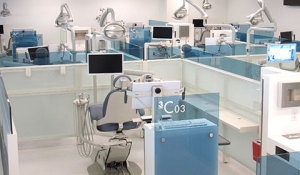 In addition to the sticker price you will be paying, expect to pay a hefty sum (upwards of double of the loan amount) during the repayment process. The interest rates given to students are currently hovering around 8% which is well over double the current mortgage loan rates, YIKES! For this reason it is very important to minimize your loans anyway possible. If you find it hard to reduce your reliance on loans be sure to understand the logistics so that you can recover from such a long term investment. Many dental schools push this topic under the rug or attempt to build confidence in students who would be taking out these loans by citing university wide loan default rates. There are a few shining examples such as UCLA School of Dentistry who really push to educate their students in borrowing money and motivate them to to reduce their loan reliance.
In addition to the sticker price you will be paying, expect to pay a hefty sum (upwards of double of the loan amount) during the repayment process. The interest rates given to students are currently hovering around 8% which is well over double the current mortgage loan rates, YIKES! For this reason it is very important to minimize your loans anyway possible. If you find it hard to reduce your reliance on loans be sure to understand the logistics so that you can recover from such a long term investment. Many dental schools push this topic under the rug or attempt to build confidence in students who would be taking out these loans by citing university wide loan default rates. There are a few shining examples such as UCLA School of Dentistry who really push to educate their students in borrowing money and motivate them to to reduce their loan reliance.
To put yourself in the best position to pay off your loans and begin your life as a dentist, spend a day understanding how interest and loans truly work. By following these five simple steps below you can move towards as more cost effective experience in school.

STEP ONE
Reducing your loans by maximizing your scholarship potential for dental school
- High Academic Achievements
- Many programs gift scholarships to top academic performers in each class. I have seen scholarships for as little as $15,000 and scholarships larger than $100K. These can seriously make a difference in pursuing your dreams as a dentist.
- Loan Repayment Programs
- Military Scholarships
- The Army, Navy, and Air Force all have a Health Professional Scholarship Program (HPSP) that will cover 100% of tuition and includes a stipend for living expenses in exchange for 4 years of service. This method of paying off your education is by far the fastest route.
- As you guessed, these programs are incredibly competitive, but applying early will give you a significant advantage. Be sure to apply WHILE you are applying to dental school.
- UoP is an excellent program for those interested in joining the armed forces as they are only required to serve 3 years.
- Upon graduation from dental school you will receive the title of captain or lieutenant depending on the program.
- Several other scholarship and repayment programs are available and differ between the Army, Navy, and Air Forces. Ask your local recruiter about your options.
- Livelong recognition and benefits for being in the armed forces.
- Care for Underserved Scholarships
- The National Health Services Corps (NHSC) provides a scholarship that covers 100% of tuition and fees in addition to a stipend in exchange for 4 years of service at an approved outpatient facility in a medically underserved community.
- Minimum of two years of service and up to 4 years depending on the number of years you are sponsored for.
- A great alternative to the Military Scholarships for those who are iffy about joining the military.
- Application opens in March/April for approximately a month.
- Private Scholarships – Private scholarships are EXTREMELY hard to find for dental school. It is recommended to look for generic graduate school scholarships in addition to scholarships offered by smaller groups you are involved with.
- Communities
- Religious organizations often have private scholarships for students in their community
- Ask your priest or young adult coordinator!
- Fraternities/Sororities may have scholarships for those continuing to graduate school or health professional programs.
- Some ethic groups have private scholarships to help support their community.
- Your undergraduate institution likely has a health professional or dental scholarship. These scholarships are seldom advertised!
STEP TWO
Apply to any and all support programs at your dental school. If a dental school allows you to provide your parents information to be evaluated DO IT! This often means the school has other means to provide grants and low-interest loans!
- University grants for “low” income households
- The definition of a “low” income household for dental schools is much different than what you would expect!
- With only weeks left before dental school begins, I am learning that both UCSF and UCLA are extremely generous with grants. I have yet to meet or hear about anybody not receiving outside aid. This was very surprising as neither of these schools acknowledged the availability of grants when asked during the interviews. It is likely other public schools around the country have similar opportunities for their students.
- University loans for “low” income households
- Again, the definition of “low” is much higher than you would think.
- Schools, both private and public, are offering Health Student Professional Loans (HSPL) directly from the university with benefits such as greatly reduced interest rates, subsidized interest, and longer deferment periods.
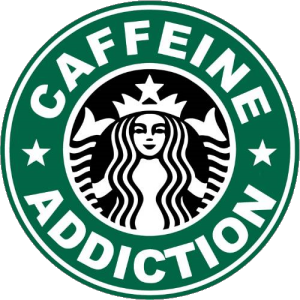
Step Three
Cut corners in your habits and lifestyle!
- Break that coffee addiction. After interest, each $4 dollar cup of coffee will cost you $6-8 dollars when repaying your loans. Take advantage of the summer before dental school to break your caffeine dependency!
- Eat smart!
- Buy food to make at home rather than eating out every day!
- Learn how to cook some quick meals!
- Take advantage of lunch and learns! FREE food AND you get to learn how to be a better dentist?! Where do I sign up!
- Don’t live in luxury
- If you don’t need a car, don’t bring one.
- Consider sharing a room
- Find cheaper housing further from campus and bike!
- Be smart with your money and don’t buy the latest and greatest of everything.
Step Four
Only take what you need.
- For graduate school there are two main types of loans. The days of subsided graduate school loans are long and gone so you will be accumulating interest while in dental school! Regardless, Federal Loans are the ONLY way to go.Private loans may have cheaper variable rates (compared to the federal fixed rates), but are missing all of the wonderful perks of federal loans (the topic of my next article, stay tuned!).
- Federal Direct Unsubsidized Loans
- These loans are the best federal loans available to dental students. Depending on your tuition and fees you will be restricted to approximately $40-55K of funding via this loan. ie UoP, UCSF, UCLA.
- In the tables below you will notice the interest rates went up by 0.8% during one academic year. This change can equal tens of thousands of dollars of additional interest. There is a loan origination fee that is a ~1% fee for borrowing the money (ie $1K fee for borrowing $100K)
- Federal Direct Plus Loans
- Federal Direct Plus Loans are available to fill the “gap” left over after you have depleted your available Federal Direct Unsubsidized Loans. These loans will cover the rest of your estimated expenses but have a much higher interest rate and loan origination fee.
- In the tables below you will notice the interest rates went up by 0.8% during one academic year. This change can equal tens of thousands of dollars of additional interest.
- The biggest difference here is the staggering 4.292% Loan Orignation Fee which means you lost $4K for every $100K borrowed instantly!
| Loan Type |
Borrower Type |
Loans first disbursed on or after 7/1/13 and before 7/1/14 |
Loans first disbursed on or after 7/1/14 and before 7/1/15 |
| Direct Unsubsidized Loans |
Graduate or Professional
|
5.41%
|
6.21%
|
| Direct PLUS Loans |
Graduate or Professional
|
6.41%
|
7.21%
|
|
Loan Origination Fees
|
|
Loan Type
|
Loan Fee
|
| Direct Unsubsidized Loan |
1.073%
|
| Direct PLUS Loan |
4.292%
|
Step Five
Plot out your loans using a loan repayment calculator. Find out how much a loan with interest will cost you over its life.
- My personal favorite resource is the Dental Loan Organizer and Calculator developed by the AAMC in partnership with the ADEA
- Allows you to keep track of all of your loan information including loan issuer information.
- Automatically pulls the correct interest rates and fees
- Allows you to plot repayment over several years and shows the cost (side-by-side) with the various federal repayment options.
- A Loan Spreadsheet made by Bereno on Student Doctor Network
- Nothing recorded and saved online and can be accessed on all devices supporting excel document editing/viewing
- Traditional loan repayment ($/month) only
- ery dynamic allowing for various other factors unrelated to your dental school expenses such as a mortgage, car loan, and business loans.
- A very close second to me (sometimes can be overwhelming)
- A Loan Calculator Program (Windows Only) made by an individual on Student Doctor Network
- Nothing is recorded and saved online
- Traditional loan repayment ($/month) only
- Simple for quick estimates
As always, if you have any concerns or would like advice, contact me through the Ask Elias page!
P.S. I apologize for the delay on this article. I finished it a few weeks back but it vanished without any backups!
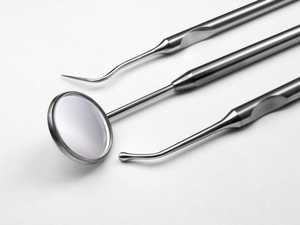 Wow! I can not believe it has already been a year! It was such a thrill receiving messages all-day from friends and readers about the good news. If you are still waiting to hear back from your dream school, don’t worry! Many schools take a few days to send out acceptances and interviews often run through March.
Wow! I can not believe it has already been a year! It was such a thrill receiving messages all-day from friends and readers about the good news. If you are still waiting to hear back from your dream school, don’t worry! Many schools take a few days to send out acceptances and interviews often run through March.
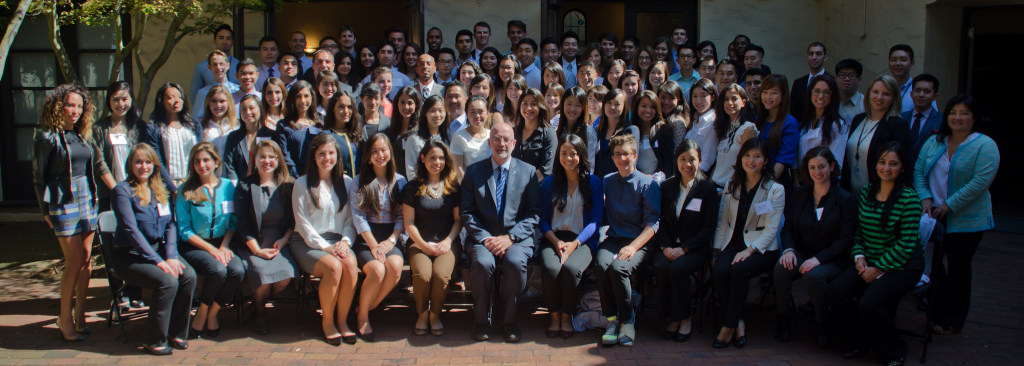
 The cost of education required to become a dentist is astronomical. In fact, it is the most expensive education for any career path! A lot of students tell me they don’t realize how much dental school really costs until it is far too late to back out. This is why it is absolutely essential, in this day and age, to make sure dentistry is the right career path for you. The unfortunate truth is our generation is not expected to be able to finance a home or a private practice until at least a decade into our careers. So what changed? Why is dental school so expensive? I won’t get into any of the grey area reasons related to the cost of education but a big key factor is the cost of dental equipment and workable space. Unlike medical, law, and pharmacy school, dentistry requires an obscene amount of expensive equipment, instruments, and consumable materials. Many dental schools are switching from a purchasable dental kit costing approximately $15K per student per year to a rentable dental kit for approximately $5K. This allows many expensive schools to reduce the overall student fees. Dental students also require more space with D1 and D2 students needing a simulation chair with a mannequin as in the picture to the right, while D3 and D4 students require a clinical chair (pictured below) in order to provide care to the community and complete requirements to graduate. As a result, dental schools often have a smaller class size than medical schools.
The cost of education required to become a dentist is astronomical. In fact, it is the most expensive education for any career path! A lot of students tell me they don’t realize how much dental school really costs until it is far too late to back out. This is why it is absolutely essential, in this day and age, to make sure dentistry is the right career path for you. The unfortunate truth is our generation is not expected to be able to finance a home or a private practice until at least a decade into our careers. So what changed? Why is dental school so expensive? I won’t get into any of the grey area reasons related to the cost of education but a big key factor is the cost of dental equipment and workable space. Unlike medical, law, and pharmacy school, dentistry requires an obscene amount of expensive equipment, instruments, and consumable materials. Many dental schools are switching from a purchasable dental kit costing approximately $15K per student per year to a rentable dental kit for approximately $5K. This allows many expensive schools to reduce the overall student fees. Dental students also require more space with D1 and D2 students needing a simulation chair with a mannequin as in the picture to the right, while D3 and D4 students require a clinical chair (pictured below) in order to provide care to the community and complete requirements to graduate. As a result, dental schools often have a smaller class size than medical schools. In addition to the sticker price you will be paying, expect to pay a hefty sum (upwards of double of the loan amount) during the repayment process. The interest rates given to students are currently hovering around 8% which is well over double the current mortgage loan rates, YIKES! For this reason it is very important to minimize your loans anyway possible. If you find it hard to reduce your reliance on loans be sure to understand the logistics so that you can recover from such a long term investment. Many dental schools push this topic under the rug or attempt to build confidence in students who would be taking out these loans by citing university wide loan default rates. There are a few shining examples such as UCLA School of Dentistry who really push to educate their students in borrowing money and motivate them to to reduce their loan reliance.
In addition to the sticker price you will be paying, expect to pay a hefty sum (upwards of double of the loan amount) during the repayment process. The interest rates given to students are currently hovering around 8% which is well over double the current mortgage loan rates, YIKES! For this reason it is very important to minimize your loans anyway possible. If you find it hard to reduce your reliance on loans be sure to understand the logistics so that you can recover from such a long term investment. Many dental schools push this topic under the rug or attempt to build confidence in students who would be taking out these loans by citing university wide loan default rates. There are a few shining examples such as UCLA School of Dentistry who really push to educate their students in borrowing money and motivate them to to reduce their loan reliance.


